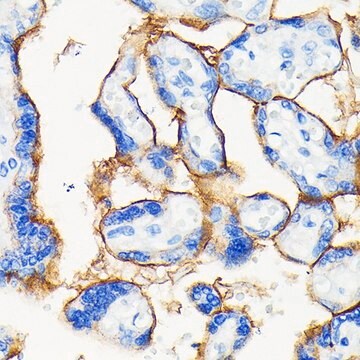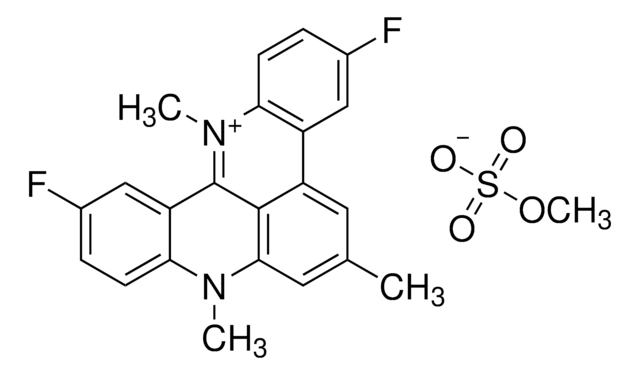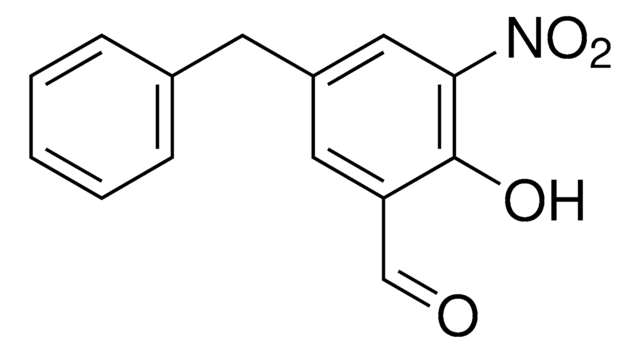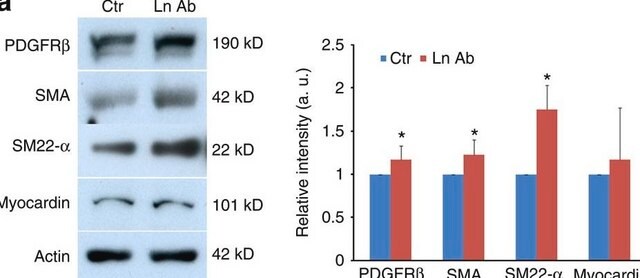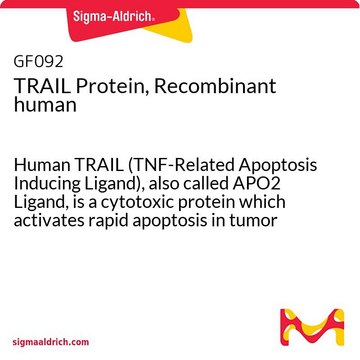HTS089M
ChemiSCREEN Membrane Preparation Recombinant Human LPA1 Lysophospholipid Receptor
Human LPA1 / EDG2 GPCR membrane preparation for GTPγS binding Assays.
Iniciar sesiónpara Ver la Fijación de precios por contrato y de la organización
About This Item
UNSPSC Code:
41106514
eCl@ss:
32161000
NACRES:
NA.84
Productos recomendados
General description
Human EDG2 encoding LPA1
Lysophosphatidic acid (LPA) is a lysophospholipid produced by activated platelets that inhibits adenylate cyclase and stimulates DNA synthesis, changes in cell morphology, and increases in intracellular calcium in a variety of cultured mammalian cells. A family of three GPCRs, LPA1, LPA2 and LPA3, mediates the biological effects of LPA (Contos et al., 2000). LPA1 is widely expressed, with particularly notable expression in the ventricular zone of the embryonic cerebral cortex. Mice lacking LPA1 exhibit craniofacial abnormalities and defective development of the cerebral cortex (Harrison et al., 2003; Choi et al., 2008). LPA1 also promotes fibrotic responses to tissue injury (Tager et al., 2008)
Millipore′s LPA1 Membrane Preparation is a crude membrane preparation made from the proprietary stable recombinant cell line that is also used for Millipore’s LPA1 Calcium Optimized Cell Line (HTS089C). This LPA1 Membrane Preparation exhibits both constitutive and agonist-induced activity in GTPγS binding assays; thus it is an ideal HTS tool for screening of compounds for agonist, inverse agonist, and antagonist activities. The membrane preparations exhibits EC50 of 73 nM for LPA in a GTPγS binding assay.
Millipore′s LPA1 Membrane Preparation is a crude membrane preparation made from the proprietary stable recombinant cell line that is also used for Millipore’s LPA1 Calcium Optimized Cell Line (HTS089C). This LPA1 Membrane Preparation exhibits both constitutive and agonist-induced activity in GTPγS binding assays; thus it is an ideal HTS tool for screening of compounds for agonist, inverse agonist, and antagonist activities. The membrane preparations exhibits EC50 of 73 nM for LPA in a GTPγS binding assay.
Application
GTPγS binding assay
Biochem/physiol Actions
GPCR Class: A
Protein Target: LPA1 / EDG2
Target Sub-Family: Lysophospholipid
Quality
1 unit = 5 μg
EC50 in GTPγS binding assay by LPA: ~ 73 nM
EC50 in GTPγS binding assay by LPA: ~ 73 nM
Specifications
Inucbation Conditions
GTPγS ASSAY CONDITIONS: Membranes are permeabilized by addition of saponin to an equal concentration by mass, then mixed with [35S]-GTPγS (final concentration of 0.3 nM) in 20 mM HEPES, pH 7.4/100 mM NaCl/10 mM MgCl2/10 μM GDP in a nonbinding 96-well plate. Unlabeled ligand was added to the final concentration indicated in Figure 1 (final volume 100 μL), and incubated for 30 min at 30°C. The binding reaction is transferred to an FB filter plate (Millipore MAHF B1H) previously prewetted with water. The plate is washed 3 times (1 mL per well per wash) with cold 10 mM sodium phosphate, pH 7.4, then dried and counted.
GTPγS ASSAY CONDITIONS: Membranes are permeabilized by addition of saponin to an equal concentration by mass, then mixed with [35S]-GTPγS (final concentration of 0.3 nM) in 20 mM HEPES, pH 7.4/100 mM NaCl/10 mM MgCl2/10 μM GDP in a nonbinding 96-well plate. Unlabeled ligand was added to the final concentration indicated in Figure 1 (final volume 100 μL), and incubated for 30 min at 30°C. The binding reaction is transferred to an FB filter plate (Millipore MAHF B1H) previously prewetted with water. The plate is washed 3 times (1 mL per well per wash) with cold 10 mM sodium phosphate, pH 7.4, then dried and counted.
Physical form
One package contains enough membranes for at least 200 assays (units), where one unit is the amount of membrane that will yield greater than 1000 cpm specific LPA-stimulated [35S]-GTPγS binding.
Liquid in packaging buffer: 50 mM Tris pH 7.4, 10% glycerol and 1% BSA with no preservatives.
Packaging method: Membrane protein was adjusted to the indicated concentration in packaging buffer, rapidly frozen, and stored at -80°C.
Liquid in packaging buffer: 50 mM Tris pH 7.4, 10% glycerol and 1% BSA with no preservatives.
Packaging method: Membrane protein was adjusted to the indicated concentration in packaging buffer, rapidly frozen, and stored at -80°C.
Storage and Stability
Store at –70°C. Product is stable for at least 6 months from the date of receipt when stored as directed. Do not freeze and thaw.
Legal Information
CHEMICON is a registered trademark of Merck KGaA, Darmstadt, Germany
Disclaimer
Unless otherwise stated in our catalog or other company documentation accompanying the product(s), our products are intended for research use only and are not to be used for any other purpose, which includes but is not limited to, unauthorized commercial uses, in vitro diagnostic uses, ex vivo or in vivo therapeutic uses or any type of consumption or application to humans or animals.
Storage Class
12 - Non Combustible Liquids
wgk_germany
WGK 2
flash_point_f
Not applicable
flash_point_c
Not applicable
Certificados de análisis (COA)
Busque Certificados de análisis (COA) introduciendo el número de lote del producto. Los números de lote se encuentran en la etiqueta del producto después de las palabras «Lot» o «Batch»
¿Ya tiene este producto?
Encuentre la documentación para los productos que ha comprado recientemente en la Biblioteca de documentos.
Nuestro equipo de científicos tiene experiencia en todas las áreas de investigación: Ciencias de la vida, Ciencia de los materiales, Síntesis química, Cromatografía, Analítica y muchas otras.
Póngase en contacto con el Servicio técnico